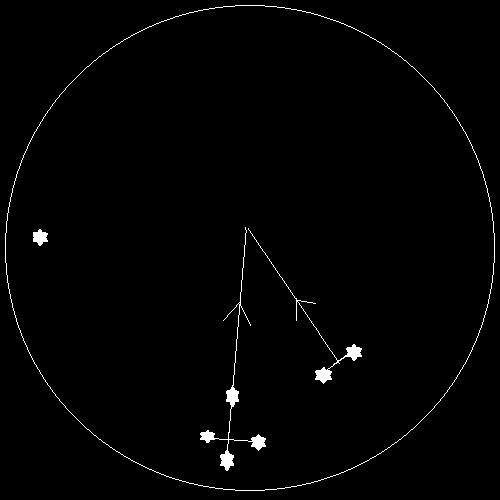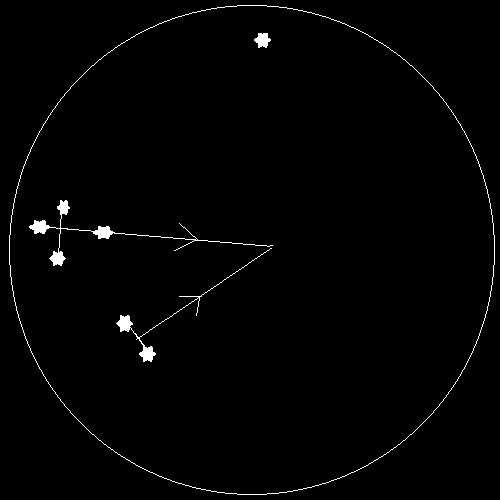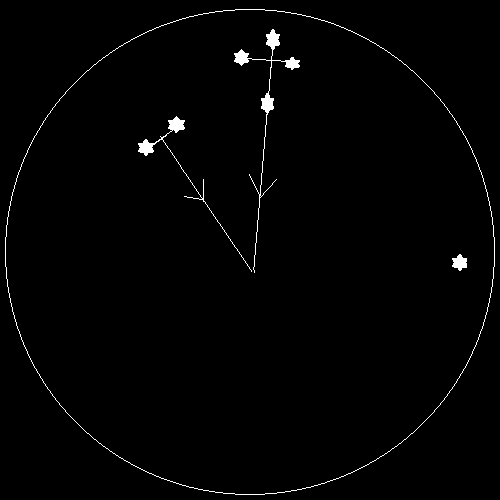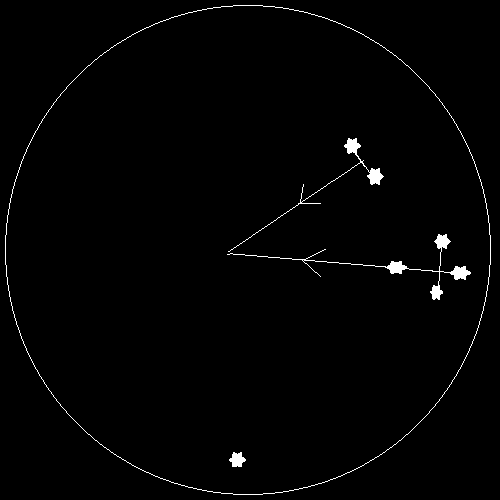How to find south, if you are in southern hemisphere, using the Southern Cross
This page is only applicable if you are in the southern hemisphere, which means you are to the south of the equator, such as in South America, Southern Africa, Australia, New Zealand and Southern Pacific.
There is no clearly identifiable star to indicate south so some skill and judgement is needed. You need to learn a pattern of stars and remember where is the direction of south in this pattern.
The four pictures below each show the same pattern, but at different times during the night. In each case due south is in the centre.

View 1: The constellation called "Southern cross" or "Crux" is low down. Follow the line to south, which is more or less straight up.
If you see the cross upright or upside down, like above, you are approximately facing south.
There are a pair of bright stars, the one on the right Alpha Centauri. Go half way between them and proceed at right angles.
Canopus is the bright star on the left.

View 2. During the night the whole pattern appears to rotate slowly around the due south direction in the centre.
In fact the earth is rotating under the stars, but you get the idea. Canopus is now high up. If you had a fixed camera with the shutter open for a long time, the stars would make circular arcs.

After a further 6 hours it will look like this. It is important to understand that the "Southern Cross" constellation may be low down, about mid way or high up. In each case consider the
orientation of the cross and aim in the direction as shown. If you have doubts check out the two other bright stars, go half way between and then and proceed at right angles. The two lines cross
at the south pole direction.
If you see the cross upright or upside down, like above, you are more or less facing south.

View 4: After four lots of 6 hours, a whole day (actually 23 hours 56 minutes) will have elapsed. If you see the cross on its side, go sideways to find south.
The above method for finding your direction requires a bit of imagination and is approximate, but will work. Alternatives are a compass, which may be badly affected by local variations in the earth's magnetic field of GPS. If you use GPS walk for a while in a straight line and it will tell you the azimuth bearing of your direction of walking. For example if the result is 260 deg then you are going approximately west (270 deg) and need to turn 80 deg to the left. If you carry on you will get a reading of something like 180 deg, which is the bearing of due south. North is zero, east is 90, south is 180 and west 270 deg true bearing. Note that GPS primarily measures your position. It does not know what direction you are facing until you move.
|
Page started 1st Dec 2017, amended 25 Feb 2023. |